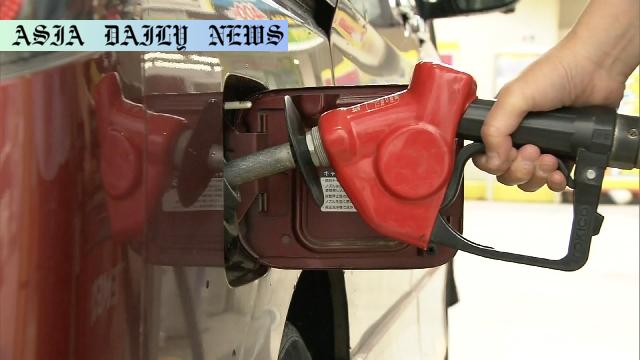Gasoline Subsidy: Japan rolls out a fixed subsidy program to trim gasoline prices and alleviate household living costs.
- Japan rolled out a fixed gasoline subsidy to reduce fuel prices by 10 yen per liter.
- Program aims to alleviate the rise in household living costs, especially with inflation concerns.
- The government has dedicated $57 billion to fuel subsidies over three years.

Introduction to Japan’s Gasoline Subsidy Program
Japan, in its persistent effort to mitigate the impact of rising living costs on households, has initiated a new subsidy program for gasoline. As of Thursday, an innovative fixed subsidy scheme has come into effect, aiming to cut fuel costs significantly for consumers. The program promises to shave off 10 yen per liter by mid-June, providing relief from escalating fuel expenses and the wider implications of inflation.
With a commitment to curbing the financial strain on households, this initiative stands out from previous subsidy structures. Earlier in the year, Japan’s subsidies were tied to an average target price of 185 yen ($1.3) per liter. However, the newly launched program prioritizes direct and immediate price reduction, showcasing the government’s proactive approach to combating the economic challenges posed by increased fuel costs.
Impact of Rising Fuel Prices and Japan’s Response
The ripple effects of rising gasoline prices have significantly permeated everyday life across Japan, influencing everything from transportation costs to the price of goods and services. For citizens, especially those from middle and lower-income brackets, the financial burden has become increasingly unsustainable. Acknowledging this, the Japanese government introduced fuel subsidies as a tactical measure three years ago. To date, around $57 billion has been allocated for these initiatives, underscoring its significance in governmental strategies combating inflation.
What differentiates this recent program is its focus on delivering immediate benefits. Unlike subsidy models dependent on fluctuating average prices, this fixed-subsidy approach resonates more with consumers by offering predictability and immediate relief. Japan’s commitment is clear: prioritizing its citizens’ welfare amidst volatile global energy markets.
The Economic Context Behind the Subsidy
Economic challenges stemming from a combination of global supply chain disruptions, energy market volatility, and inflation trends have underscored the importance of decisive government policies. Rising fuel prices have exacerbated living costs for millions, signaling an urgency to address this critical issue. By launching a fixed subsidy mechanism, Japan isn’t just responding to an immediate economic challenge but also attempting to stabilize its broader financial ecosystem.
This ambitious program aligns with Japan’s broader economic goals of price stability and sustainability. It demonstrates the country’s proactive fiscal management and social welfare prioritization, setting a precedent for other economies encountering similar inflationary pressures.
Looking Ahead: The Bigger Picture
While this subsidy program is a short-term solution to reduce fuel prices and manage living costs, its implications transcend immediate economic relief. It sets a clear benchmark for how countries should prioritize the welfare of their citizens in times of financial crisis. Furthermore, policymakers worldwide can draw valuable lessons from Japan’s strategy, which balances fiscal responsibility with progressive, citizen-centric initiatives.
Nevertheless, questions remain regarding the long-term sustainability of subsidy programs in the context of ongoing volatility in global energy markets. As Japan’s leadership implements this initiative, the program’s reception and its economic outcomes will provide critical insights into the feasibility of such measures globally. Its effectiveness could determine whether other nations experiencing inflationary struggles might follow suit.



Commentary
An Essential Relief for Households
Japan’s decision to introduce a fixed gasoline subsidy program is not just timely, but also deeply impactful for households burdened by increased living costs. Rising fuel prices have been a pressing concern globally, and Japan’s initiative showcases a clear effort to relieve this financial strain. This program strikes a chord with the masses by addressing one of the most immediate financial concerns – transportation and fuel costs – which form a significant portion of household expenditures.
A Bold Move in a Challenging Economic Climate
The Japanese government’s allocation of $57 billion to subsidy programs over three years is reflective of its commitment to combating inflation and ensuring price stability. The fixed subsidy scheme, in particular, provides predictability for both consumers and businesses. It’s a bold move that reinforces how governments can play a pivotal role in navigating economic crises. By proactively addressing this challenge, Japan demonstrates resilience and an unwavering focus on its citizens’ needs.
Setting a Global Example
While the program brings immediate benefits to Japanese citizens, its broader implications cannot be understated. Other nations grappling with similar challenges can look to Japan’s efforts as an example of decisive action. It underscores the importance of tailoring subsidy designs to directly address specific economic problems. Japan’s approach also reflects innovative thinking, departing from traditional subsidy structures to ensure more targeted relief for its citizens.
A Step Toward Building Economic Resilience
At its core, Japan’s gasoline subsidy program goes beyond addressing immediate economic challenges. It represents a strategic step aimed at strengthening economic resilience. Ensuring affordability of essential commodities like fuel not only alleviates financial stress but also helps maintain long-term economic stability. Moving forward, Japan’s policymakers must continue assessing the program’s sustainability while balancing global energy market dynamics and domestic fiscal considerations.